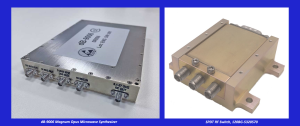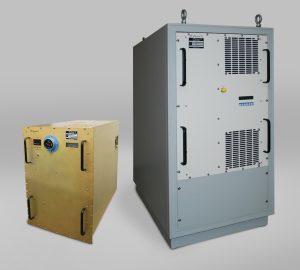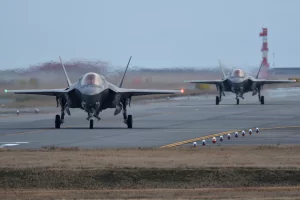The Millimeter-Wave Spectrum: A Critical Asset for Defense
By Robert Richardson, dB Control
For many years, the millimeter-wave spectrum remained an untamed frontier for defense systems because its high atmospheric attenuation, high costs, and lack of suitable semiconductor technologies rendered it a massive technological challenge. While missile seekers and a few specialized systems tapped into its unique properties, electronic warfare, radar, and communications remained in the more accessible microwave frequencies. The only viable technology that could deliver high RF power levels was vacuum electronics, such as traveling wave tubes and klystrons, which remains true today.
That said, semiconductor technology has come a long way. As the 5G standards added these frequencies into the mix, there is finally a financial incentive to focus more intensely on technologies and fabrication techniques that will propel millimeter-wave and terahertz frequencies forward for defense systems in the coming years. Consequently, the military today is embracing millimeter-wave frequencies more intensely, leading to advances in high-resolution radar, high-data-rate communication systems, electronic warfare, drone detection, and other applications essential to ensuring future battlefield success.
What Millimeter Wavelengths Bring to the Table
Each portion of the microwave spectrum has unique characteristics that make it better suited than others for specific applications. For example, sky-wave and ground-wave propagation are the most significant contributors to operation at frequencies up to about 30 MHz. As frequencies increase into the VHF and UHF regions, propagation increasingly becomes line-of-sight. Once they pass through about 1 GHz, atmospheric attenuation becomes a limiting factor along with free-space path loss.
At frequencies considered “millimeter-wave,” above about 30 GHz, attenuation from precipitation, obstacles, and the characteristics of the atmosphere become more pronounced. These impediments and a lack of affordable components and enhanced technologies are the main reasons why the millimeter-wave region, especially at higher frequencies, has remained unused for so long.
Even among some veterans, attenuation at millimeter-wave frequencies has been considered to progress linearly upward as frequency increases, all the way to the infrared region. This is not the case, as shown in Figure 1, because the resonant frequencies of oxygen, hydrogen, and other atmospheric gases absorb more electromagnetic energy at some frequencies than others. Frequencies with lower attenuation are called atmospheric windows, where long-range propagation is possible.
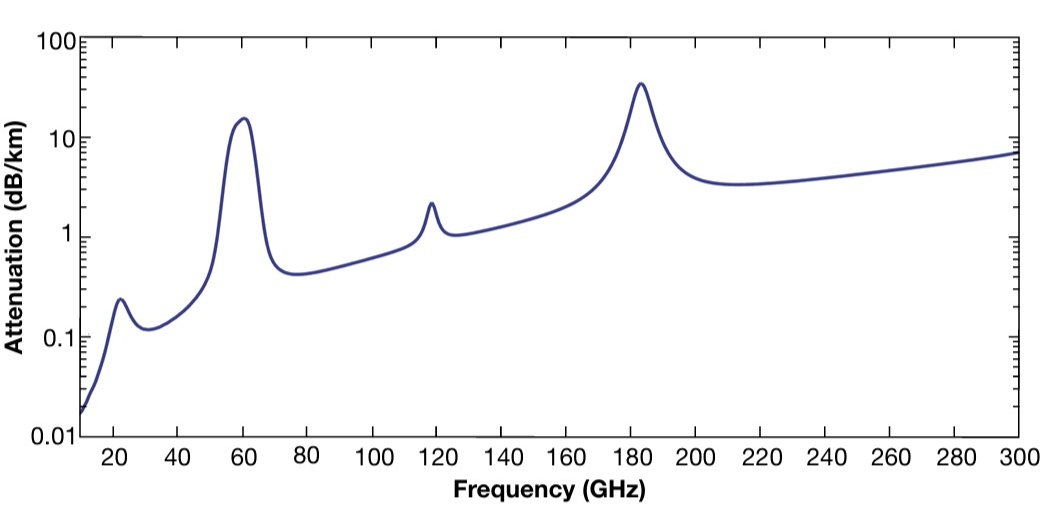
Figure 1. Attenuation in the millimeter-wave region does not progress linearly. This makes some frequencies better suited for specific applications than others.
It’s these “windows” that make millimeter-wave propagation unique. For example, at about 18 GHz, attenuation is about 0.1 dB per kilometer, and it’s not that higher at 40 GHz. At around 60 GHz, attenuation increases dramatically, rising to at least 12 dB per kilometer and rapidly falling to about 0.8 dB per kilometer. Surprisingly, attenuation at 80 GHz is still only about 0.6 dB per kilometer, and even at 95 GHz, attenuation is just 0.8 dB or so. When the high gain achievable with small directional antennas is considered, substantial effective isotropic radiated power (EIRP) is feasible and can virtually eliminate the additional losses due to frequency incurred from atmospheric absorption. In fact, it’s been demonstrated that for the same RF output power and when antennas at the end of the path are the same, the signal strength at 140 GHz in free space is actually 5.7 dB higher than at 73 GHz and 14 dB greater than at 28 GHz.
However, millimeter-wave frequencies do have limitations. Propagation is inherently line-of-sight, and virtually any obstruction significantly reduces system performance. In addition, propagation changes with altitude, precipitation, and height above sea level. Nevertheless, the assumption that millimeter-wave frequencies, even those near-infrared, are not worth pursuing is simply incorrect.
The takeaway is that even though attenuation is higher at some millimeter-wave frequencies than others, these differences offer exciting possibilities for defense (and other applications). For example, for secure communications, operating at frequencies where attenuation is high is desirable to reduce the likelihood of inception and jamming. At frequencies where a more extended range is desired, designers have a choice of frequencies both lower and higher than this for applications such as high-resolution radar and remote sensing. A system that combines transceivers that can operate at both frequencies that can be changed in milliseconds presents formidable challenges for adversaries.
Millimeter wave technology is revolutionizing military operations through diverse applications. This high-frequency range enables precise control over swarms of unmanned aerial vehicles, enhancing tactical flexibility. It also powers immersive augmented and virtual reality systems, elevating the quality of simulation-based training and mission preparation. For intelligence gathering, millimeter wavelengths enable real-time surveillance and reconnaissance, and command and control structures benefit from the technology’s ability to support distributed networks.
For example, the Army uses Wi-Gig (IEEE 802.11ay), a version of Wi-Fi that operates at 60 GHz, for communication, as it creates narrow beams that allow Army command posts to evade detection. In addition, researchers at the University of California, Davis, have developed a 110-mW 39-GHz Doppler radar front end in 65-nm CMOS, which allows the radar to achieve 4-μm range accuracy.
At DARPA, participants in the Millimeter Wave Digital Arrays (MIDAS) program are pioneering digital phased arrays in the 18 to 50 GHz range to create power-efficient 4×4 dual-polarized transceiver tiles using advanced semiconductor and integration techniques. The agency intends for them to serve as foundational components for scalable arrays, supporting mobile ad-hoc networks and LEO satellite communications. The program’s element-level digital beamforming aims to enable multi-beam operation, potentially reducing network discovery time and boosting throughput in high-data-rate communication systems.
The U.S. has also fielded several programs that use millimeter-wave frequencies, including the AN/APG-78 Longbow Ka-band fire-control radar for the AH-64D/E Apache attack helicopter manufactured by The Boeing Company. The radar and interferometer are housed in a dome located above the main rotor which allows target detection while the helicopter is behind obstacles. (See Figure 2.) It can simultaneously track up to 128 targets and engage 16 at once with an attack initiated within 30 seconds.
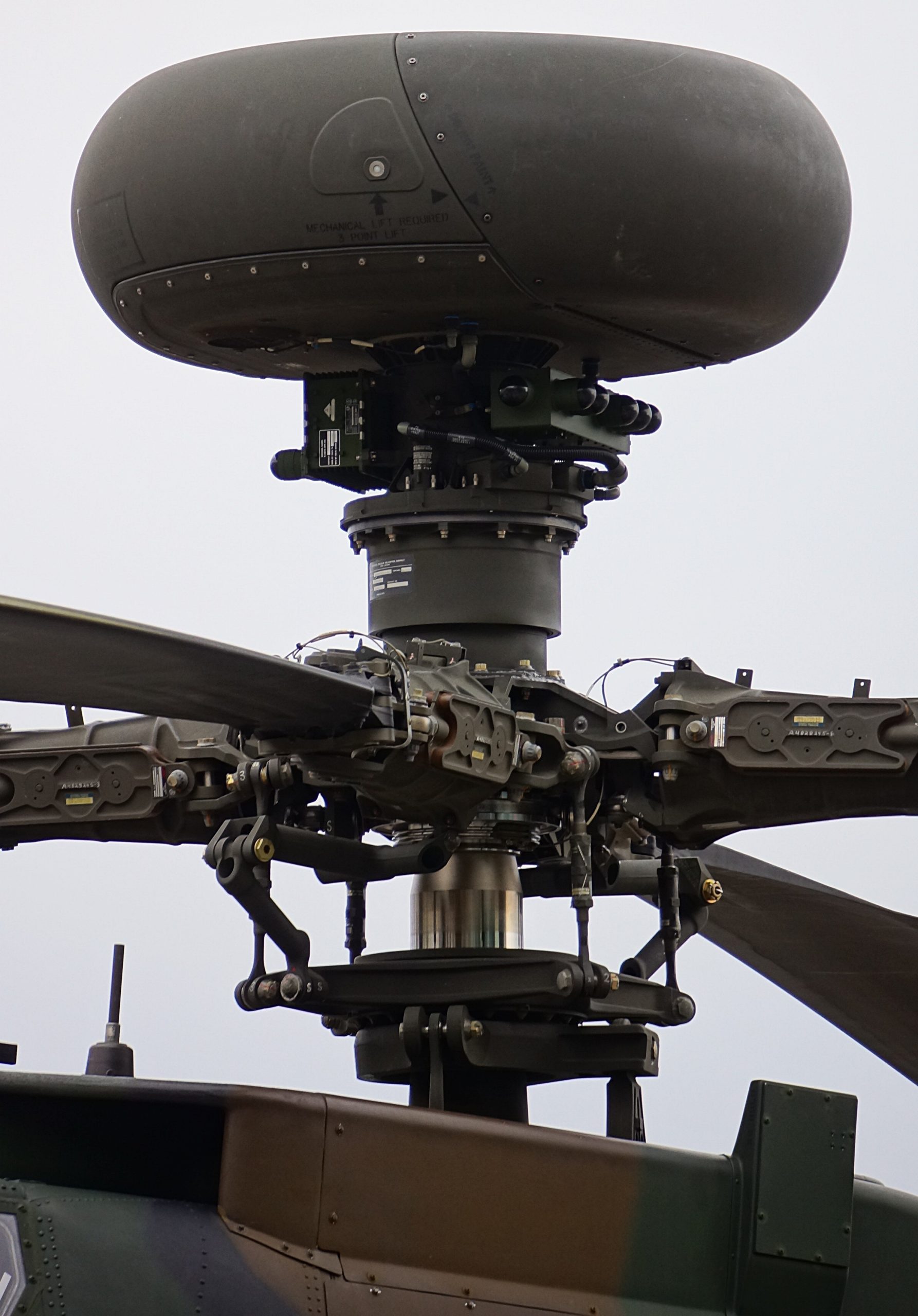
Figure 2. The AN/APG-78 Longbow Ka-band fire-control radar for the AH-64D/E Apache attack helicopter, housed in a dome located above the main rotor, can simultaneously track up to 128 targets, engage 16 at once and initiate an attack within 30 seconds. Photo courtesy The Boeing Co.
Electronic warfare systems aim to detect and defeat threats, and until recently, those threats were at lower frequencies. That said, Russia’s war on Ukraine has demonstrated that this scenario is changing, and EW systems must adapt to this reality, which takes time, and Ukraine has little to spare. It has, however, demonstrated the need for EW systems that operate at higher and higher frequencies to meet new threats from adversaries.
The highly directional nature of millimeter-wave beams enables precise and effective jamming and counter-jamming systems. These systems can disrupt enemy communications and sensors while protecting friendly assets from similar attacks. They are designed to target specific frequencies and communication channels, effectively neutralizing enemy electronic systems. For example, millimeter-wave jammers can disrupt radar systems, rendering them less effective or inoperable. In addition to jamming, millimeter-wave technology is employed in counter-jamming systems that protect friendly communications and sensors from adversary attacks. These systems can detect and counteract jamming attempts, ensuring the integrity and reliability of military communications.
Rapid, high-capacity data transmission becomes paramount as military operations increasingly rely on real-time data for decision-making and coordination. Millimeter waves provide the bandwidth necessary to handle large volumes of data, including real-time video feeds, complex sensor information, and extensive network communications. This capability is particularly critical in network-centric warfare, where the rapid exchange of information can decisively influence battlefield outcomes.
The millimeter-wave region is immense and comparatively free of interference, unlike traditional communication frequencies, such as those in the UHF and microwave frequencies, which are congested because of their widespread use in commercial and civilian applications. The massive available bandwidth at millimeter-wave frequencies allows communications systems to achieve gigabit-per-second data rates.
Millimeter-wave frequencies benefit radars because they can obtain higher resolution of objects. This is because resolution is inversely proportional to wavelength, so shorter wavelengths allow for better resolution. For example, the angular resolution of a radar system is proportional to λ/D, where λ is the wavelength, and D is the antenna aperture size. As a result, shorter wavelengths lead to better angular resolution for a given antenna size. In addition, the range resolution is proportional to c/B, where c is the speed of light and B is the bandwidth. This means that millimeter-wave radars can employ larger bandwidths that improve range resolution. This enhanced resolution allows these radars to detect and resolve smaller objects and fine details.
Millimeter-wave radar systems can detect and track objects with remarkable accuracy. For instance, these systems can identify incoming missiles, potentially with higher precision than conventional radar. This capability is crucial for missile defense systems, which must detect, track, and intercept threats before they reach their targets. Millimeter-wave radar is also invaluable in urban warfare scenarios, where high-resolution imaging is required to distinguish between potential threats and non-threatening objects in complex environments.
Millimeter waves are also employed in advanced imaging and sensing systems, which benefit from their ability to penetrate certain materials while being absorbed by others. This property allows specialized sensors to detect concealed objects or substances that are otherwise difficult to identify. For example, millimeter-wave imaging systems detect concealed weapons or explosives and can differentiate between materials based on their absorption characteristics, enabling the identification of hidden threats. This capability is essential for military and homeland security operations, where detecting and neutralizing potential threats is critical.
Stealth technology aims to reduce the radar cross-section of military assets, such as aircraft, ships, and vehicles, making them less detectable by enemy radar systems. Defense researchers are creating more effective stealth coatings and shapes by understanding and manipulating the interaction of millimeter waves with various surfaces. These coatings can absorb millimeter waves, reducing the radar signature of the asset and enhancing its ability to evade detection.
Summary
As military operations evolve in response to new threats and technological advancements, effectively utilizing the millimeter-wave spectrum will be a crucial factor in maintaining military effectiveness and national security. Fortunately, ongoing research and development in millimeter-wave technology are proceeding much faster than in years past, from advances in materials science, semiconductor technology, and radar engineering.
ABOUT THE AUTHOR

Robert Richardson
Robert Richardson is a Principal Hardware Engineer at dB Control. He has more than 15 years of experience specializing in mission-critical RF amplifier and power supply design for the defense industry. Robert provides leadership to a team of design engineers, while continually developing next generation products. Prior to working in the microwave spectrum, he worked in the audio spectrum with inventor/musician Les Paul. He earned a Bachelor of Science degree in Electrical Engineering from San Jose State University, with a focus on power electronics.
ABOUT dB CONTROL
Established in 1990, dB Control supplies mission-critical (often sole-source) products worldwide to military organizations, major defense contractors, and commercial manufacturers. The company designs and manufactures reliable high- and low-voltage power supplies, high-power TWT Amplifiers (TWTAs), microwave power modules (MPMs), transmitters for radar, electronic countermeasures (ECM) and communication applications on airborne, maritime, and ground-based military platforms. After acquiring TTT-Cubed in 2019, Paciwave in 2021, and Charter Engineering in 2022, dB Control expanded its product line to offer coaxial EM and pin diode RF switches, specialized RF/microwave components, integrated microwave subsystems, and custom radio frequency (RF) receivers and sources. dB Control also provides specialized contract manufacturing and repair depot services from its 40,000-square-foot facility in Fremont, California. The company is AS 9100D and ISO 9001:2015 certified. More information is available at www.dBControl.com or by calling 1-510-656-2325.


